Page Table of Contents
About the Author
Hot Topics
Updated on Dec 23, 2025
Introduction
Solid State Drives (SSDs) are gaining popularity in the storage industry. The low pricing, ruggedness, and reduced power consumption with better speed have led to the widespread acceptance of SSDs.
Using solid-state disks can accelerate a PC in several ways, but the real change comes in access times. When you request a piece of data from a hard-disk drive (HDD), it needs to be transported from the disk to the read/write head, and sometimes also to DRAM. This means that even if the hard-disk platter is rotating at 7200 rpm, the read/write head needs to wait until it's over.
Like HDD, SSDs store data on rotational platters. However, SSDs do not use any moving parts, and the data storage is electronic by nature. Consequently, there's no need to fetch the required information. Instead of waiting for the platter to make its way around, you can get what you need immediately!
Data integrity is vital to businesses, including government, defense, medical and financial institutions. These are often legally required to ensure that their data can be readily recovered and read. Traditional hard drives rely on magnetic platters that hold the data itself. But, due to possible crashes and physical trauma, there is a possibility that data can be potentially lost or corrupted. SSDs, as previously described, store their data in memory chips to prevent the same instances, ensuring your information is safe and secure.
The above reason pretty much sums up why SSDs are becoming more popular. If you want to know the SSD performance, click the link below to benchmark it:
How to Check M.2 SSD Performance [3 Efficient Ways]
This passage will give you detailed answers about M.2 SSD performance and offer you a convenient and professional tool to check M.2 performance.
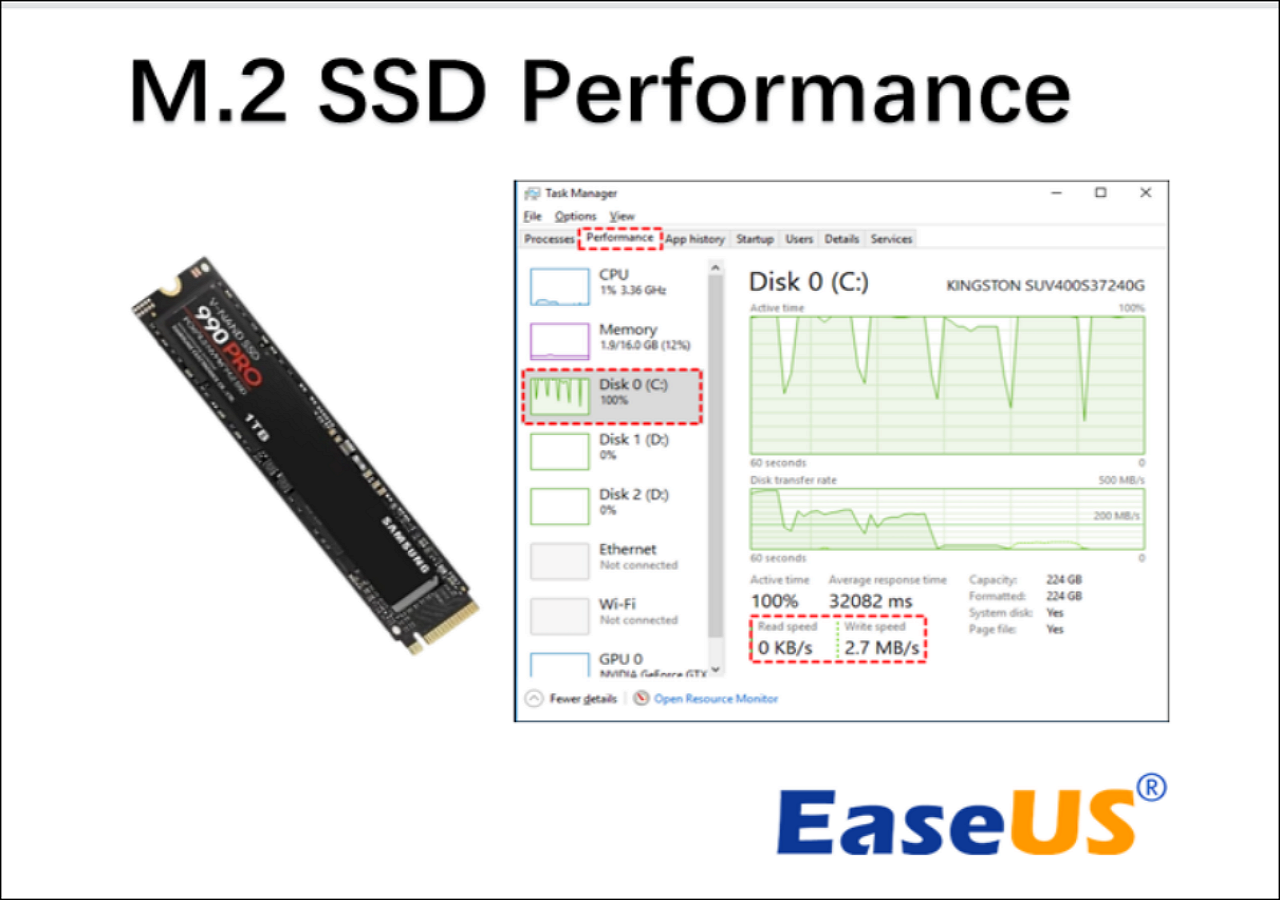
If you want to maintain the speed and performance of your external or internal SSD storage. Follow the steps below to keep and prolong the capabilities of your Solid State drive longer than they normally last.
Tip 1. Update SSD Firmware
Tip 2. Don't Defrag SSD
Tip 3. Enable TRIM or Not
Tip 4. Don't Store to Full Capacity
Tip 5. Don't Store Large Files
Tip 6. Enable AHCI
Tip 7. Disable Hibernation
Tip 1. Update SSD Firmware
For the uninitiated, firmware refers to the low-level software that runs individual devices. Firmware revision's primary purpose is to fix bugs and add functionality to essential products.
A computer's Solid-state drive (SSD) is like any other digital storage device that requires an update to its firmware. Just like your smartphone, tablet, and computer all have their own code, which controls their functionality, so too does your SSD.
Is It Necessary to Update SSD Firmware?
Updating firmware is a must-do for several reasons. The biggest reason is to maintain performance across the board. The updates could be monthly, quarterly, or yearly. Checking and updating the firmware of SSD is something I generally encourage. It is done to improve both the performance and functionality of your SSD.
Tip 2. Don't Defrag SSD
Defragmentation is a basic process we've all done to our computer's hard drive at least once, but what does it mean for an SSD?
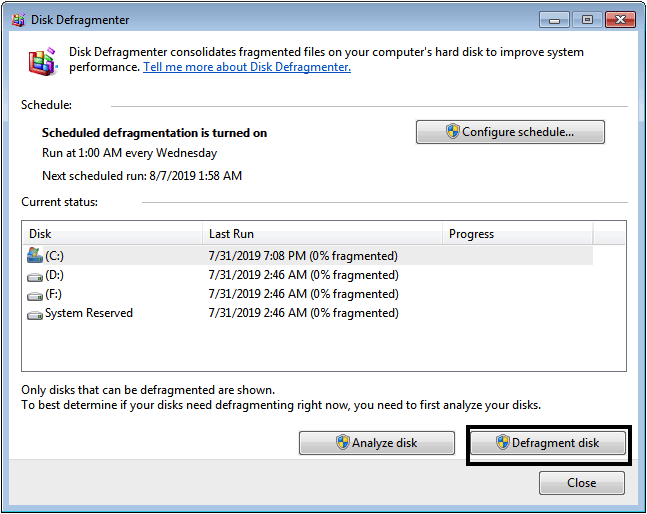
If you're using an SSD as a boot drive, it makes no sense to defragment the drive. Defragmenting will improve performance in magnetic disk drives by replacing files with physically contiguous data into a single file. That's because the head of the disk can access contiguous data faster than non-contiguous data. But there's no head on an SSD. There is no moving part, so there's nothing to be gained from defragmenting the Solid State Drive.
It is also important to note that defragging a Solid State Drive will not make it faster and may even decrease its life expectancy.
Tip 3. Enable TRIM or Not
TRIM was introduced in the 2009 version of the SATA specification. TRIM command is also known as SCSI UNMAP or ATA Unmap. It is a valuable feature on Solid State Disks (SSDs). TRIM is a command that enables the operating system to inform an SSD, which blocks of data are no longer in use. This prevents the SSD from unnecessarily zeroing out those sectors, which can help maximize its lifespan, among other benefits.
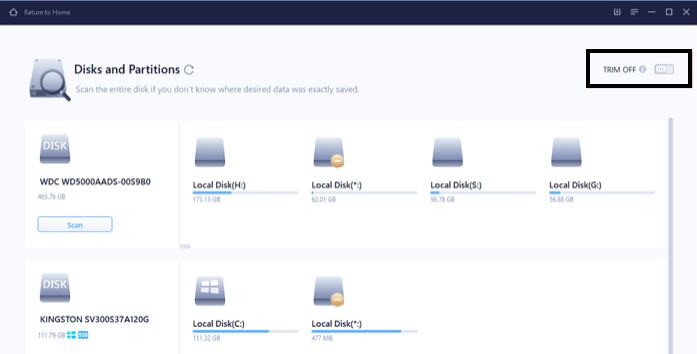
If you have the TRIM command enabled on your operating system, it will tell the SSD controller which blocks of data are no longer in use. This allows the SSD to adjust its wear-leveling and garbage collection algorithms accordingly.
Without TRIM, the SSD has no way to know which chunks are no longer in use. This makes it difficult for the built-in garbage collection algorithm to do its job, slowing down performance over time.
And, let's face it: performance is one of the most important factors why we choose a solid-state drive (SSD) for our laptops or desktops. SSDs have a renowned performance advantage over conventional hard disk drives (HDDs). The Trim command enables the operating system to tell an SSD which data blocks can be wiped. Removing unnecessary files on an SSD increases its performance potential and life span. So, if your SSD and OS supports TRIM, you should keep it enabled, prolonging the life of an SSD.
Tip 4. Don't Store to Full Capacity
This question has been on the minds of many people and businesses as they contemplate jumping on the SSD bandwagon.
Some problems arise when the substantial capacity of an SSD is used. Since there is less free space to write in, particularly if your PC is used for gaming, transfer speed deteriorates and gives error messages during writing. You may also encounter sluggish performance when the system boots up or shuts down; there might even be system instability issues.
Yes. It's not a good idea to fill your SSD up all the way from performance issues related to overflowing caches. The flash memory on an SSD is used as a cache for more frequently read data. Although it has no trouble reading from a full cache, it will start to throw out old data it presumes is less important (even if that data is still in use). This process makes it slower, as it tries to decide what data to keep and what to clear deeper into the drive.
The secret to keeping your solid-state drive (SSD) fast is simple: never fill it up, or seldom.
Tip 5. Don't Store Large Files
Storing large files and infrequently accessed files requires specialized hardware solutions that provide high availability and reliable content delivery. So don't store huge, rarely accessed files on an SSD drive, since this is the waste of an expensive storage device.
SSD's drives are costly and therefore should not be used for bulk storage purposes. Good examples of files you don't want to keep on an SSD would be movies, music, songs, and photos, which you wouldn't need to access more than once in a blue moon.
The less frequently your files are accessed, the more economically you can store them on the mechanical drive. Games are a notable example. Some games save their levels in the same.EXE files that run the games. These programs are used infrequently but take up a ton of space. Instead of moving these huge EXEs to an SSD, you can save money and consume less electricity by storing these large programs on your mechanical hard drive.
You can store your movies, music, etc. on a standard HDD drive. This way you can improve the speed and performance of your SSD drive.
Only store your operating system, files for frequently used applications, and important program files on an SSD. For everything else, use an HDD.
Tip 6. Enable AHCI
AHCI stands for Advanced Host Controller Interface and provides a high-speed platform for data transfer between a computer’s hard drive and its motherboard. When enabling this mode, SSD users will have the best experience, as enhanced command queuing (QC) support will increase the writing speed. AHCI can be found in most modern motherboards, which means users only need to enable it via BIOS.
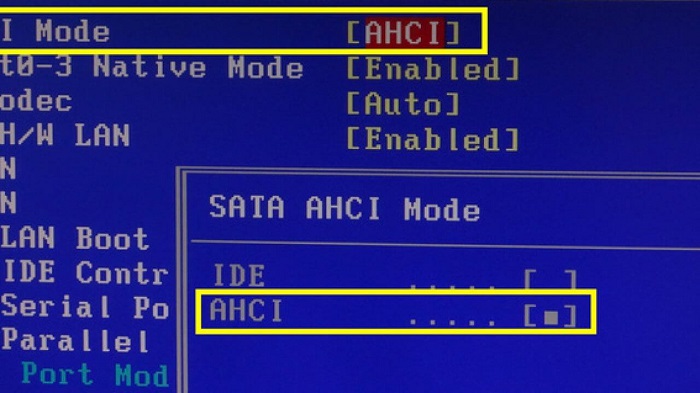
When you run the computer in the IDE mode, the number of writes per second to the SSD will be limited. Even an entry-level SSD can handle about 70-80mbps (megabytes per second) in data transfer. But, when you run in the AHCI mode, it boosts the speed to 600-800mbps or even more.
You can enable AHCI using this official Windows 10 guide.
Tip 7. Disable Hibernation
When you turn on Hibernation on Windows, it will save your current state and shut down. To start it up again, you simply press the power button and boom! You got your computer up and running. Excellent and convenient, right? Not always. The problem is that having hibernation enabled on an SSD can substantially shorten its life span. First of all, hibernation uses more power than simply shutting down your computer. And when it starts, it must load everything in from the SSD.
Most computer users do not have any problems with Windows hibernate. Hibernation allows you to save the hours of work, and then continue later, without starting from the beginning. However, some fear that using the "hibernate" feature will lead to gradual loss of data in an SSD hard drive and damage it after a few days or months.
Disabling hibernation for SSD (Solid State Drive) is a valuable performance tweak. It is an optimization that will allow you to squeeze more life out of your SSD by reducing disk writes.
To turn off hibernation in Windows: Open Command Prompt and type powercfg.exe /hibernate off
Press enter and hibernation will be stopped.
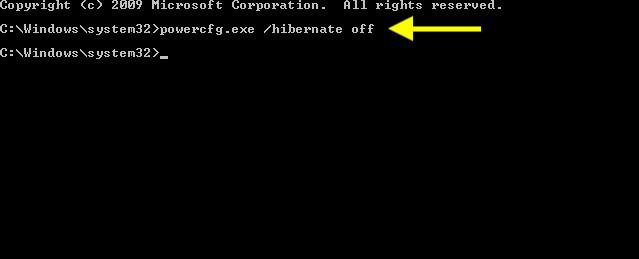
SSD Maintenance: How to Optimise SSD with EaseUS Partition Master
EaseUS Partition Master Free Edition is a reliable software that can manage hard disk partitions. It also provides users with several features to help them partition disk space more efficiently.
Partition Master can copy partitions from one location to another. Particularly helpful if the destination partition is smaller than the source, but you want to copy data from a large partition to a small one, or from a hard drive to an SSD (for example). Partition Master also has a "Clone Drive" function that allows you to copy all partitions of one disk to another. The product also has many other features, including defragmentation tools, the ability to remove unwanted programs, and more.
You can easily resize a drive to extend your disk space. Expands the partition size of your disk safely and easily, while keeping the original data unchanged. It can copy the entire hard disk drive, including the system partition or operating system, to other hard drives without losing any data. You can simply select the source partition and a destination partition, then press "Clone Partition" to clone the source to the destination. The cloned partition will be an exact copy.
Another crucial feature to maintain and optimize your SSD is 4K alignment. The 4K alignment function of EaseUS Partition Master is to optimize SSD performance by adjusting it to 4K. 4K alignment of SSD means the sectors are all aligned to 4096 sectors. This is so when you read or write data from an SSD, it will be much faster since all sectors are already laid out to access an even number of sectors.
EaseUS Partition Master enables you to resize/move partitions on your hard drive, maximizing disk space with its unique and advanced features. You can now resize FAT32, NTFS, EXT2/3 partitions without losing data. Increase system performance by splitting an extensive partition into smaller ones.
Step 1. Shrink a neighbor partition to extend partition.
If the hard drive has enough unallocated space to extend the target partition, jump to Step 2, and continue. If not, free up space first:
- Go to the Partition Manager section, right-click on a partition next to the target partition and select "Resize/Move".
- Drag the partition ends to free up space, leaving enough unallocated space behind the target partition, click "OK".
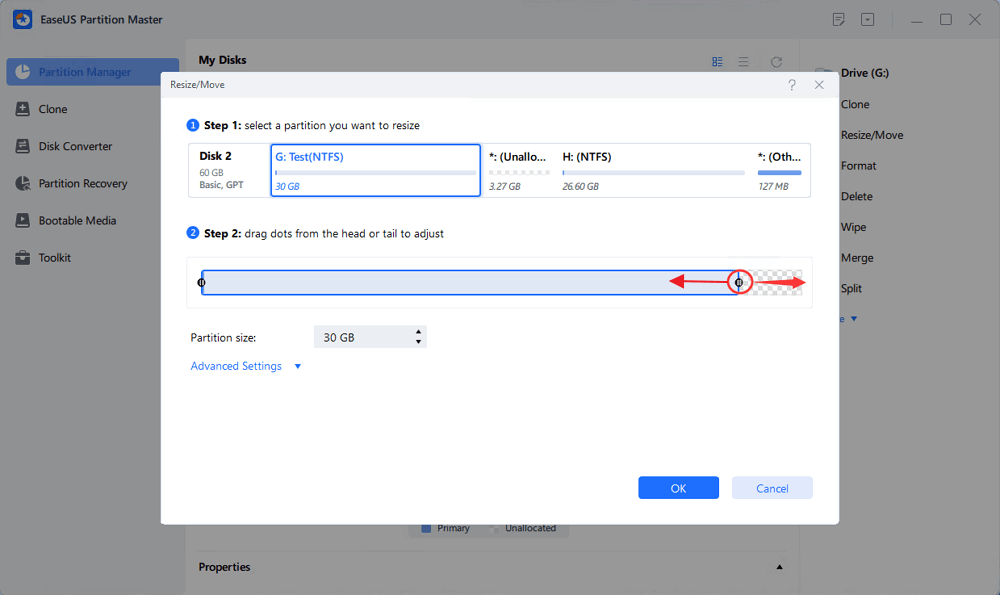
Step 2. Extend the target partition with unallocated space.
Right-click on the target partition you want to extend and select "Resize/Move".
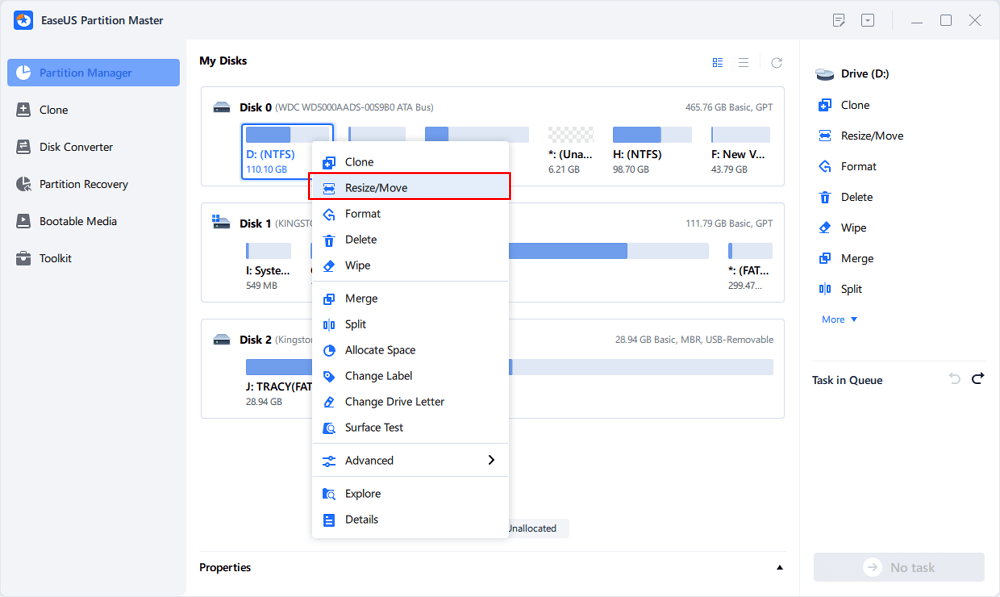
Drag the target partition handle into the unallocated space to extend partition.
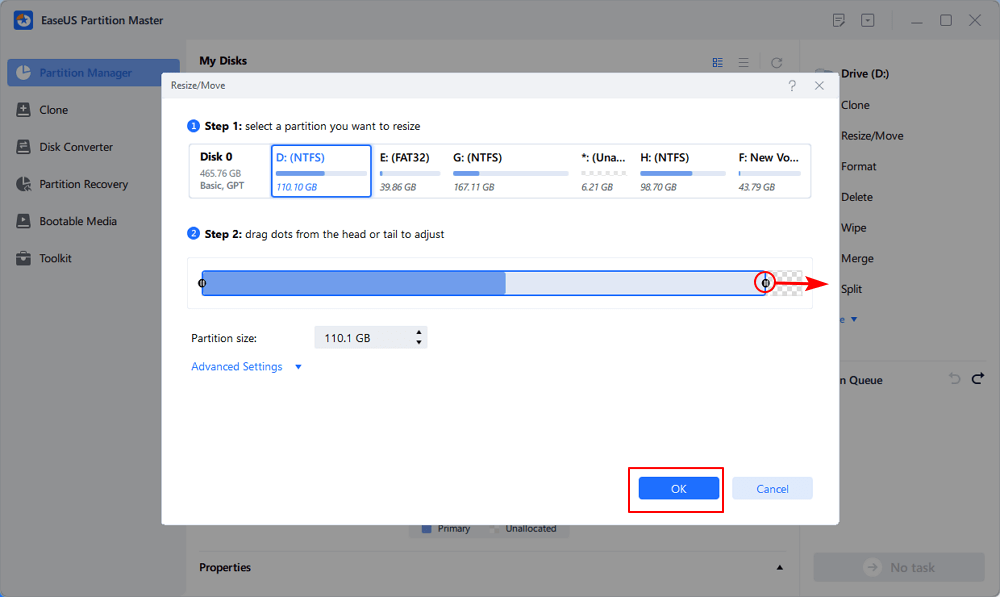
Step 3. Keep all changes.
Click the "Execute Task" button and click "Apply" to keep all changes.
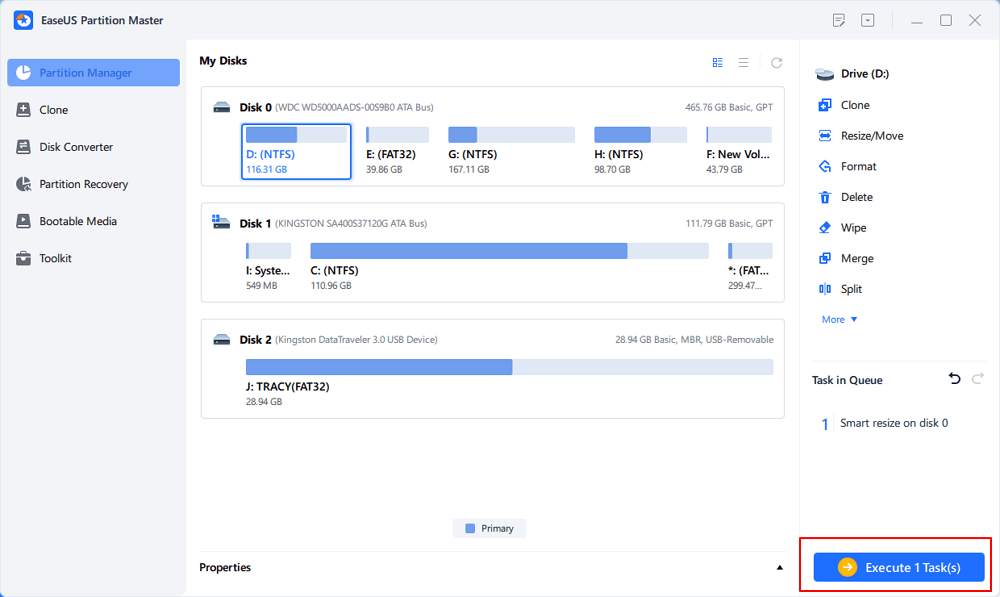
To Sum Up
SSDs are impressive -- they make the process of loading files and applications seem like magic. However, SSDs are more than speed. Just as you would with a regular hard drive, it's essential to maintain its longevity with regular maintenance. By learning about best practices and the precautions to take, you can rest assured you've done nearly all that can be done to make your SSD work at its most optimal and last as long as possible.
SSD's technology has advanced greatly in recent years, but that does not mean they are not without their limitations. They can still break down, and even with the most conscientious of use, an SSD will eventually die. Nevertheless, if you take precautions to ensure your SSD is always running at its peak, using defragmenting software regularly, and using cleaning utilities where applicable, chances are it will serve you for several more years.
All the above tips will drastically improve SSD's performance, speed, and lifespan.
How Can We Help You
About the Author
Oliver is an EaseUS professional writer who dares explore new areas. With a passion for solving tech issues with straightforward guides for common users, Oliver keeps honing his writing craft by developing in-depth solutions for disk and partition management, computer boot-up issues, file transfer, etc.
Written by Tracy King
Tracy became a member of the EaseUS content team in 2013. Being a technical writer for over 10 years, she is enthusiastic about sharing tips to assist readers in resolving complex issues in disk management, file transfer, PC & Mac performance optimization, etc., like an expert.
Product Reviews
-
I love that the changes you make with EaseUS Partition Master Free aren't immediately applied to the disks. It makes it way easier to play out what will happen after you've made all the changes. I also think the overall look and feel of EaseUS Partition Master Free makes whatever you're doing with your computer's partitions easy.
Read More -
Partition Master Free can Resize, Move, Merge, Migrate, and Copy disks or partitions; convert to local, change label, defragment, check and explore partition; and much more. A premium upgrade adds free tech support and the ability to resize dynamic volumes.
Read More -
It won't hot image your drives or align them, but since it's coupled with a partition manager, it allows you do perform many tasks at once, instead of just cloning drives. You can move partitions around, resize them, defragment, and more, along with the other tools you'd expect from a cloning tool.
Read More
Related Articles
-
How to Secure Erase SSD or HDD for Free
![author icon]() Tracy King/2025/12/23
Tracy King/2025/12/23 -
Low Level Format Tool Download, 2026 Review [Pros & Cons]
![author icon]() Jean/2026/01/05
Jean/2026/01/05 -
ASUS Laptop Slow in Windows 11/10? 7 Effective Fixes!🔥
![author icon]() Brithny/2025/12/23
Brithny/2025/12/23 -
How to Stop Programs from Running in the Background on Windows 10/11
![author icon]() Tracy King/2025/12/23
Tracy King/2025/12/23
Hot Topics
EaseUS Partition Master

Version 20.0 is here - full exFAT support, easier disk partitioning, and PC performance optimization.








